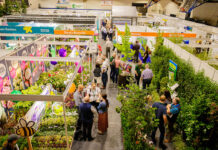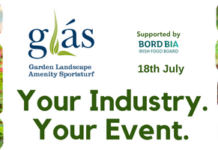John Stanley
As a consumer a walk down many High Streets of the world has become a bit of a drudge. Your walk can take you past retailers who are doing the same thing in the same way as they have done for a number of years. The result of this is that many consumers are now talking about buying online, it is more convenient and less hassle and then gives them time to enjoy different experiences.
Consumers are asking for an “added value experience “ rather than be offered more “stuff’ At the same time they are losing touch with nature since urban dwellers now make up 50% of the global population and that growth increase by 80 million a year.
An urban consumer ,who is out of touch with the nature and is looking for value experiences provides retailers with new marketing opportunities.
Retailers in Belgium are known for being a bit for edgy in their merchandising and display techniques They are bolder than retailers in other countries and it is a delight to walk down the Kammenstraat in Antwerpen. This is a street that is a bit more quirky in an already quirky retail environment.
Firstly one passes “Fish and Chips” a clothes fashion store aimed at Generation Y, this is the only store I know that decorates its front window with graffiti and then sells tins of spray paint next to the counter as an impulse purchase when buying clothing. Over the road from this store is “All Saints” the UK clothing store that has some of the best theatre merchandising I am aware of in the clothing industry.
Further down the street you come to the newly opened Eilean Nature Shop .This store originated as concept developed by naturalist s and artists Robert and Angela Parkin form the UK. They found it difficult to develop the idea of a flagship store in the UK and hence went into partnership with Johan Van Wambeke and his family in Belgium to open their first store in Belgium.
This is no ordinary store, it is a store focused on bringing nature to the urban consumer.
The retailer has joined forces with Natuurpunt, the Belgium conservation group who have over 100,000 members in the Flanders area of the country.
The 450 square metres store has a number of clear objectives
1 To introduce urban consumers to the nature issues that affect them and the local community, for example the organisation is trying to reintroduce the otter back into the Belgium countryside .
2 To provide the consumer with added value products that are Fair trade and from a know “natural “ source. This allows the store to become a story teller and not just another product retailer.
3 To provide an educational platform for the consumer to become more aware of their natural environment.
The store design provides a natural setting in the city. The store layout is set in a forest with a dry watercourse and islands display area. The categories on display include toys for children, grow it yourself, outdoor clothing, artwork from famous local artists on nature themes and natural cosmetics.
To take a virtual tour of the store log onto my member site www.johnstanley.com.au . I have featured it in our December Retail World TV report on retail trends.
The consumer is looking for a new experience and the aim of the Nature Store is to provide a space where they can linger longer. Does it work? When customers walk in and you cans see them take a breath and slow down form the trudge of walking down the High Street.
Expect to see nature shops become more common on the High Street of the future.







